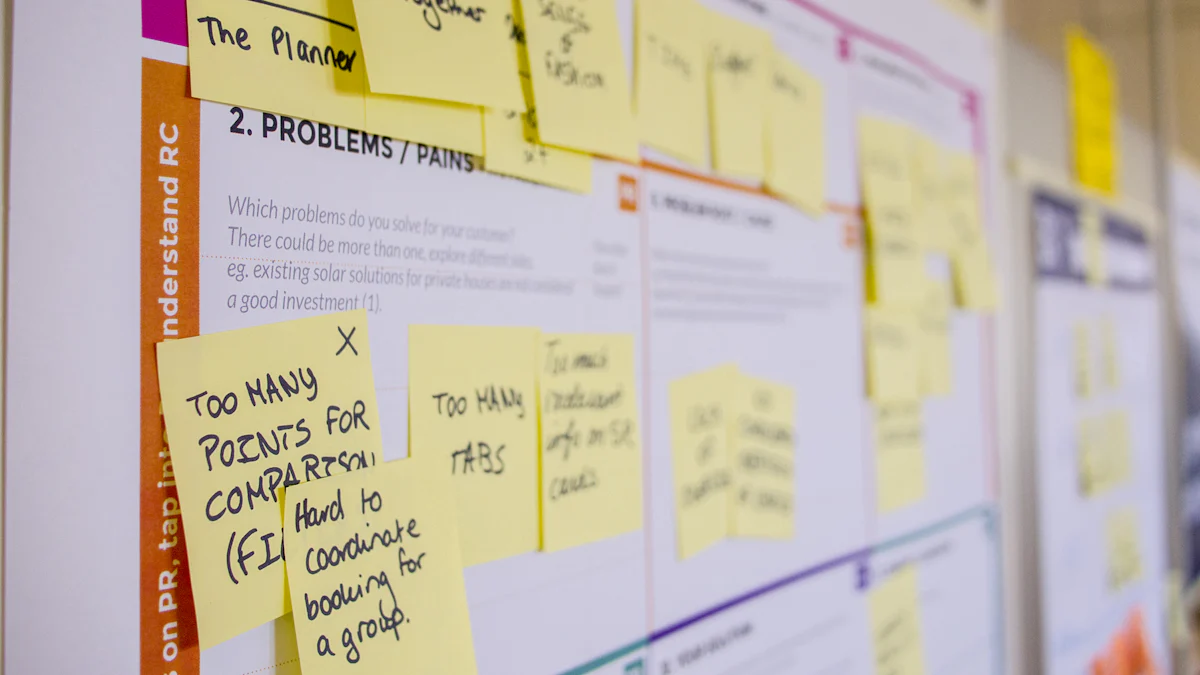

An agile environment represents a dynamic and flexible workspace. Agile methodologies, widely adopted in software development, enhance productivity and adaptability. Teams work in short cycles to evaluate and adjust project goals. The agile environment fosters innovation and collaboration. Research shows that 93% of agile organizations report better customer satisfaction. Agile practices improve employee engagement and operational performance. Understanding the agile environment becomes crucial as 86% of teams adopt these approaches. Agile environments allow employees to choose their work style, leading to increased job satisfaction.
Understanding Agile Environment

Definition of Agile Environment
An agile environment serves as a dynamic workspace that promotes flexibility and collaboration. This environment encourages teams to adapt quickly to changes. Agile methodologies play a crucial role in shaping this environment. These methodologies focus on iterative processes and continuous improvement. The agile environment supports rapid decision-making and innovation. Teams in such environments work efficiently to meet customer needs.
Key Characteristics
Agile environments exhibit several key characteristics:
- Flexibility: Teams can adjust plans and strategies swiftly.
- Collaboration: Team members work closely, sharing ideas and feedback.
- Customer Focus: Projects prioritize customer satisfaction and requirements.
- Iterative Processes: Work progresses through short cycles, allowing frequent reassessment.
- Transparency: Open communication ensures everyone stays informed.
Core Principles
The core principles of an agile environment include:
- Individuals and Interactions: Emphasize the importance of people over processes.
- Working Software: Deliver functional products regularly.
- Customer Collaboration: Engage customers throughout the project lifecycle.
- Responding to Change: Adapt to evolving requirements and market conditions.
Historical Context of Agile Environment
The agile environment has roots in the early 2000s. The Manifesto for Agile Software Development marked a significant milestone. This manifesto outlined 12 principles and values that define agile frameworks. The agile movement began as a response to traditional management's slow pace. Agile methodologies emerged as a set of principles for software development. These principles promote collaborative efforts and evolving solutions.
Evolution of Agile Practices
Agile practices have evolved over time. Initially, these practices focused on software development. Lean software development and feature-driven development gained popularity. Dynamic development and crystal approaches also became part of agile methodologies. Agile-inspired management approaches now extend beyond software development. These approaches empower teams and foster collaboration in various industries.
Influence on Modern Workplaces
Agile environments significantly influence modern workplaces. Businesses adopt agile practices to enhance productivity and adaptability. Agile methodologies shape future software development models. These methodologies also impact project management and business strategies. Agile environments encourage innovation and improve operational performance. Organizations benefit from increased flexibility and customer satisfaction.
Importance of Agile Environment
Benefits for Organizations
Enhanced Flexibility
Agile environments provide organizations with enhanced flexibility. Teams can quickly adapt to changes in project requirements. This adaptability allows organizations to respond to market shifts. A flexible approach helps maintain competitive advantage. Agile methodologies support continuous improvement and innovation. Organizations like GE Healthcare have successfully applied Agile, demonstrating its versatility across sectors.
Improved Collaboration
Agile environments foster improved collaboration among team members. Teams work closely, sharing ideas and feedback regularly. This collaboration enhances problem-solving and decision-making. Agile practices encourage open communication and transparency. Organizations report better operational performance due to collaborative efforts. Akbank and Nordstrom have seen success by implementing Agile practices in their operations.
Impact on Employees
Increased Job Satisfaction
Agile environments contribute to increased job satisfaction for employees. Employees experience greater autonomy in their work. Agile practices allow individuals to choose their work style and schedule. This flexibility leads to higher employee engagement and retention. Research shows that 76% of Agile organizations report better employee engagement. Satisfied employees contribute to a positive workplace culture.
Encouragement of Innovation
Agile environments encourage innovation among employees. Teams are empowered to experiment and explore new ideas. Agile methodologies promote a culture of creativity and continuous learning. Employees feel motivated to contribute innovative solutions. Organizations benefit from the fresh perspectives and ideas generated by their teams. NASA has successfully used Agile in aerospace projects, showcasing its potential for fostering innovation.
Implementing Agile Environment

Steps to Transition
Assessing Current Environment
Organizations must first assess their current environment. This assessment helps identify existing processes and workflows. Teams should evaluate how these align with agile principles. A thorough analysis reveals areas needing improvement. The assessment phase involves gathering feedback from all stakeholders. Feedback ensures that the transition plan addresses key concerns.
Planning and Execution
Planning becomes crucial after assessing the current environment. Organizations must develop a detailed roadmap for the transition. The roadmap outlines specific steps and timelines. Teams should prioritize training and education on agile methodologies. Training equips employees with the necessary skills and knowledge. Execution of the plan requires strong leadership and commitment. Leaders must foster a culture that embraces change and innovation.
Challenges and Solutions
Common Obstacles
Transitioning to an agile environment presents several obstacles. Resistance to change often emerges as a significant challenge. Employees may feel uncertain about new processes and roles. Communication breakdowns can hinder collaboration among teams. Maintaining customer engagement throughout the transition proves difficult. Agile projects rely heavily on customer feedback and involvement.
Strategies for Overcoming Challenges
Organizations can employ strategies to overcome these challenges. Effective communication plays a vital role in addressing resistance. Leaders should clearly articulate the benefits of agile practices. Regular updates and open forums encourage employee participation. Training programs help ease the transition by building confidence. Involving customers early and often ensures their engagement. Continuous feedback from customers enhances project outcomes.
Agile environments play a crucial role in modern workplaces. Agile practices enhance team performance and organizational success by fostering collaboration and innovation. Agile methodologies drive project management transformation through flexibility and customer focus. Organizations adopting agile practices experience improved efficiency and product delivery. The future of agile practices looks promising. Industries beyond IT, like healthcare and finance, anticipate embracing agile methodologies. This shift will lead to successful project outcomes and continuous improvement. Agile environments will continue to promote adaptability, empowering teams to respond swiftly to changing requirements.
FAQ
An agile environment promotes flexibility and collaboration. Teams work in short cycles to adapt quickly to changes. This approach enhances productivity and innovation.
An agile environment allows organizations to respond swiftly to market changes. This adaptability helps maintain a competitive edge. Enhanced collaboration improves problem-solving and decision-making.
Employees experience increased job satisfaction in agile environments. Greater autonomy and flexibility lead to higher engagement. A culture of innovation encourages creative solutions.
Resistance to change often poses a challenge. Employees may feel uncertain about new roles. Communication breakdowns can hinder collaboration. Customer engagement must remain consistent throughout the transition.
Effective communication plays a crucial role. Leaders should clearly articulate the benefits of agile practices. Training programs build confidence and ease the transition. Involving customers early ensures their engagement and feedback.
Agile methodologies extend beyond software development. Industries like healthcare and aerospace successfully implement agile practices. These methodologies empower teams and foster collaboration across sectors.
GE Healthcare and NASA have successfully applied agile methodologies. These organizations demonstrate the versatility of agile practices. Agile environments enhance productivity and innovation in various industries.
Continue Reading About Agile Environment
10 Game-Changing Project Management Reporting Types!
Unlock project success with 10 must-know reporting types! Track progress, manage risks, and stay on budget like a pro.
Lewis
Mar 03, 2025
15 Best Software Reporting Tools for 2025
Explore the top 15 software reporting tools for 2025. Compare features, pricing, and usability to find the best fit for your business needs.
Lewis
Oct 08, 2024
10 Must-Have Marketing Agency Reporting Tools for Your Success
Optimize your agency's performance with top reporting tools. Explore analytics, social media, SEO, and more for data-driven decisions and efficiency.
Lewis
Oct 09, 2024
2025 Data Pipeline Examples: Learn & Master with Ease!
Unlock 2025’s Data Pipeline Examples! Discover how they automate data flow, boost quality, and deliver real-time insights for smarter business decisions.
Howard
Feb 24, 2025
2025 Best Data Integration Solutions and Selection Guide
Explore top data integration solutions for 2025, enhancing data management and operational efficiency with leading platforms like Fivetran and Talend.
Howard
Dec 19, 2024
Augmented Analytics: Unlock the Core Concepts & Benefits!
Discover augmented analytics—where AI and ML automate data prep and insights, revolutionizing decision-making for smarter, faster business strategies!
Lewis
Mar 04, 2025


